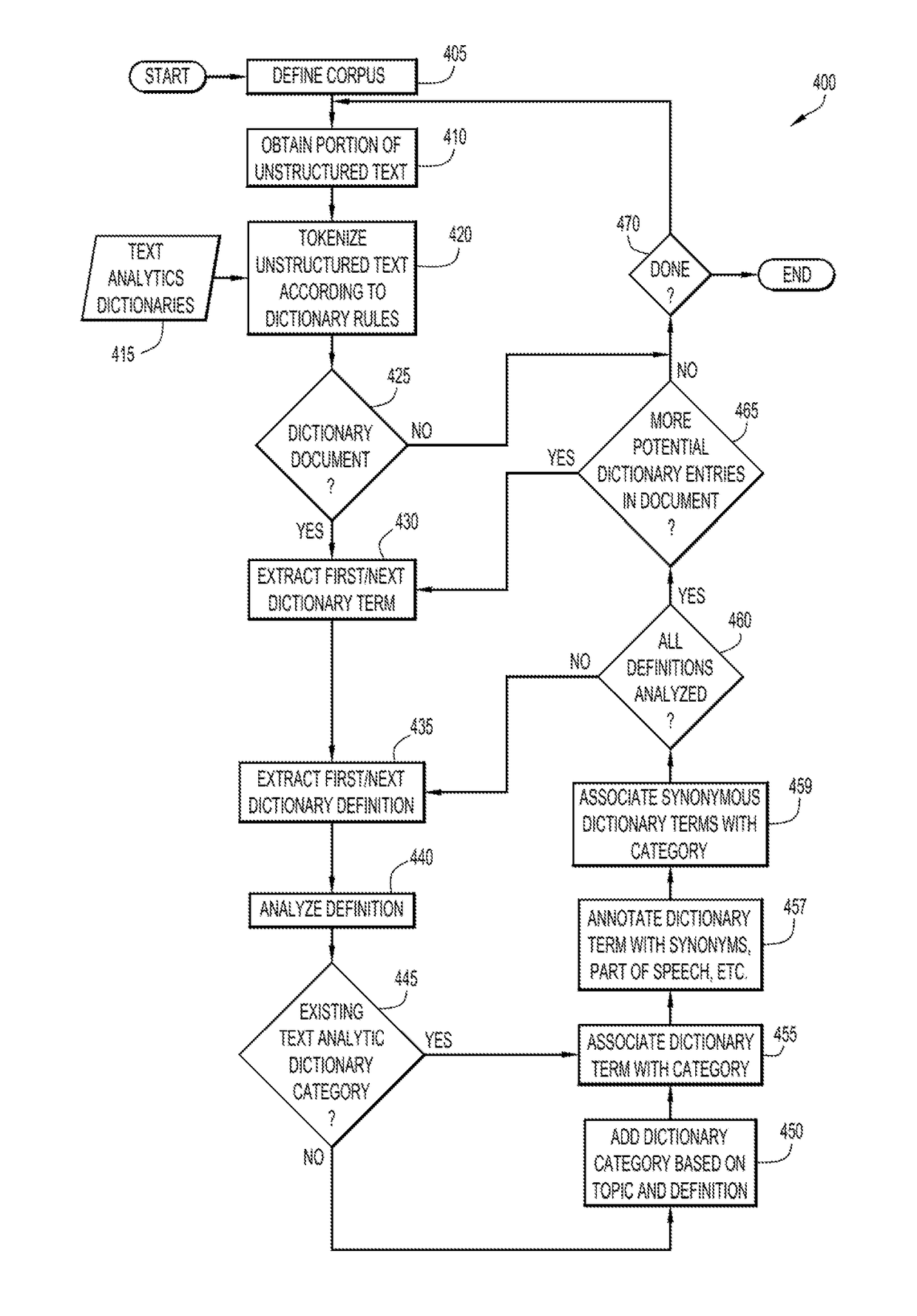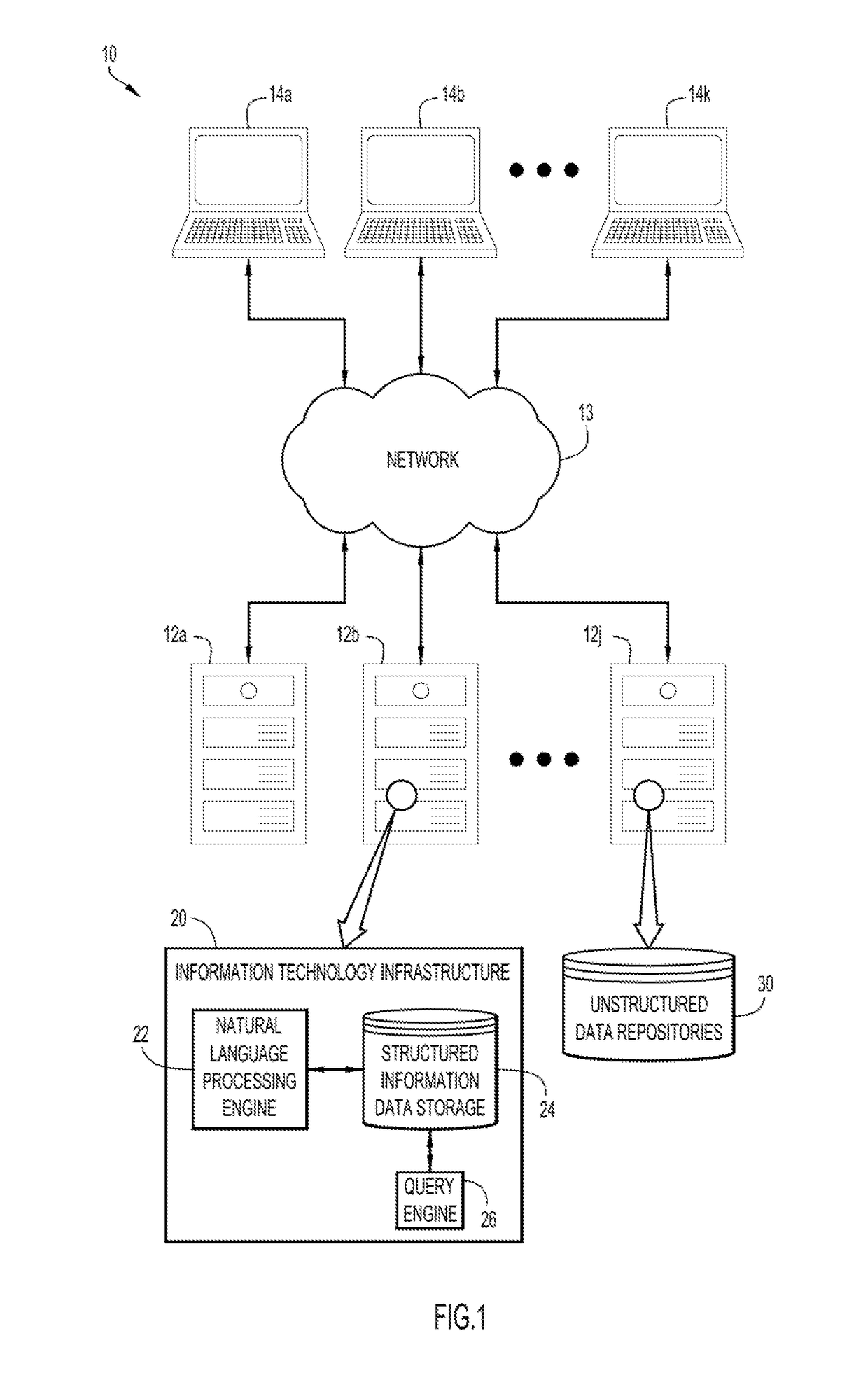Structured dictionary population utilizing text analytics of unstructured language dictionary text
a text analysis and dictionary technology, applied in the field of natural language processing, can solve the problems of underpopulated dictionaries with respect to the overall content of data, labor-intensive, and expensive manual techniques for creating or otherwise populating text analytic dictionaries
- Summary
- Abstract
- Description
- Claims
- Application Information
AI Technical Summary
Benefits of technology
Problems solved by technology
Method used
Image
Examples
Embodiment Construction
[0011]An example environment for use with present invention embodiments is illustrated in FIG. 1 as network infrastructure 10. As is illustrated, the environment includes one or more server systems 12a-12j, representatively referred to herein as server system(s) 12, and one or more client or end-user systems 14a-14k, representatively referred to herein as client system(s) 14. Server systems 12 and client systems 14 may be remote from each other and may communicate over a network 13. Network 13 may be implemented through any number of suitable communications media, e.g., metallic conductors, optical fiber, air, etc. using one or more signaling techniques and possibly in accordance with one or more standardized communication protocols, e.g., Internet Protocol (IP), Transport Control Protocol (TCP), User Datagram Protocol (UDP), etc. Network 13 may be supported by suitable hardware components to implement wide area networks (WAN), local area networks (LAN), internets, intranets, etc. A...
PUM
 Login to View More
Login to View More Abstract
Description
Claims
Application Information
 Login to View More
Login to View More - R&D Engineer
- R&D Manager
- IP Professional
- Industry Leading Data Capabilities
- Powerful AI technology
- Patent DNA Extraction
Browse by: Latest US Patents, China's latest patents, Technical Efficacy Thesaurus, Application Domain, Technology Topic, Popular Technical Reports.
© 2024 PatSnap. All rights reserved.Legal|Privacy policy|Modern Slavery Act Transparency Statement|Sitemap|About US| Contact US: help@patsnap.com










